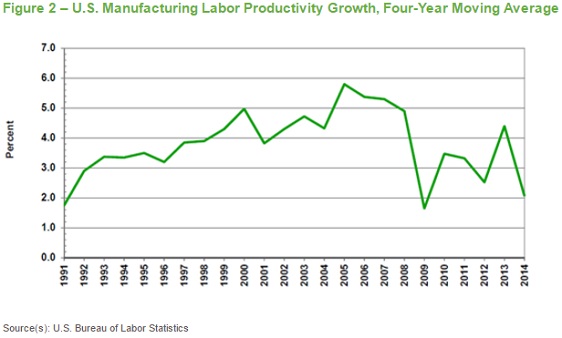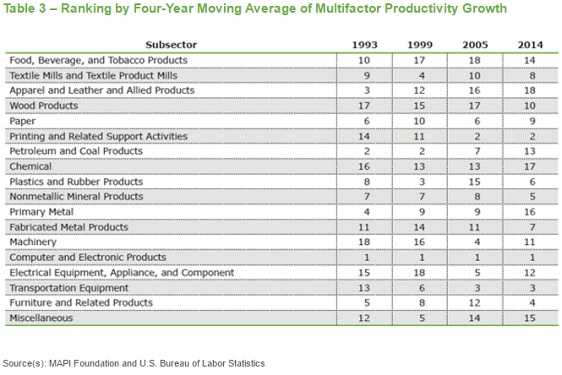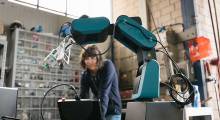A new study by the MAPI Foundation provides compelling statistical evidence on the importance that capital investment and educated labor have on productivity performance.
The study analyzed productivity growth in a range of manufacturing subsectors over the past 25 years. In particular, the study looked for ways that manufacturers who have already invested in capital equipment can increase productivity and innovation.
Produced by Cliff Waldman, director of economic studies at the MAPI Foundation, and sponsored by Rockwell Automation, a global leader in industrial automation, the study offers evidence that innovation and capital investment play a significant role in driving multi-factor productivity growth (i.e., output per unit of a combined set of inputs including labor, materials, and capital) in a wide range of manufacturing subsectors. The research indicated that capital investment is the mechanism by which productivity-enhancing innovation spreads through companies, supply chains, and the broad economy.
Waldman’s research finds that another key link to productivity performance is the labor force participation rate of the population holding a B.A. degree or higher, in effect the economy’s supply of educated labor.

The research offers several critical conclusions:
● The manufacturing sector, a traditional driver of overall productivity, has seen its pace of productivity growth slow over the last 15 years. According to Waldman, this is partly due to slowing productivity growth in the computer and electronic products industry, which has played an outsized role in driving manufacturing productivity growth in recent decades. “But productivity in the information technology space is slowing dramatically,” he said. “Thus, the outlook for US manufacturing productivity performance is murky, and arguably worrisome.”
● Machinery and transportation equipment subsectors have shown relative productivity improvement, but not yet enough to replace the thrust from computer subsector productivity.
● The economy’s supply of educated labor plays a definitive role in driving labor productivity growth across diverse subsectors.
The report revealed strong cross-subsector correlations of labor productivity growth. “Evidence supports the hypothesis that productivity determination is not completely independent across manufacturing industries,” Waldman said. “The apparent interconnectedness of productivity performance across industries is likely the result of supply chain linkages, innovation spillovers, cluster impacts, and trade channels. Such evidence suggests that, where investments in any one industry lead to faster productivity growth, such expenditures can have impacts that extend to other subsectors as well.”
According to the study, industry subsectors that have experienced relative improvements in productivity performance since 1993 include machinery, transportation equipment, and printing. But their growth has not been enough to replace the decline in computer subsector productivity.
“An appropriate policy of response to the uncertain outlook of manufacturing productivity performance must consist of a coordinated program that stimulates manufacturing investment as well as innovation investment and increases supply of educated labor in the broader economy,” Waldman said. “For both manufacturing and the economy as a whole, the recent slowdown in productivity causes concern, because it contributes to both slow output and wage growth.”

In an upcoming report, Waldman will present the results of a national survey of automation investment behavior by U.S. manufacturers, including incidence of automation investment, incentives underlying the decision to deploy automation capital, the pace of deployment, and criteria for evaluating the performance of automation investment.
“Isolating the critical investments required to improve productivity performance is an important foundational element in the MAPI Foundation’s first study,” added Joe Kann, vice president of global business development at Rockwell Automation. “We look forward to the conclusions regarding industry-specific productivity drivers that will be identified in the remaining studies.”
Click here for the full report.







